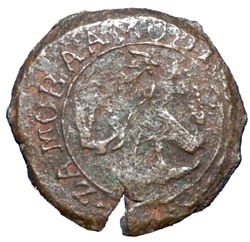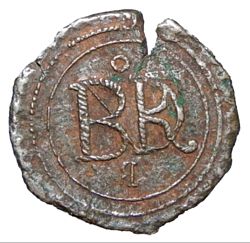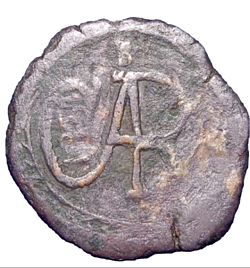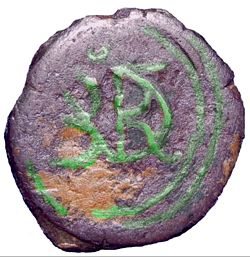Rediscovery of two Zamora Municipal Tokens
by Ricardo Vargas Verduzco
These coins were only known by their description in the work of Manuel Romero de Terreros, Monedas de Necesidad de Michoacán. The first one was listed by Romero de Terreros with the number 127 (MRDT 127) in his 1940 work and later referred as ZA. 14 in the annex to Bolrtín 7 of the Sociedad Numismática de México in 1955. No reference to these coins has been made by other authors, including the most important ones on the subject: Mauricio Fernandez, Russel Rulau, Miguel L. Muñoz, Frank W. Grove, Francisco A. Pradeau and Claudio Verrey.
In both Romero de Terreros catalogs the coins appear without images. I knew that the Banco de México had acquired the numismatic collection of Manuel Romero de Terreros, and assuming that the coins described in his books now belonged to the collection of the institution, I made an exhaustive search in it without any luck: the MRDT 127 coin is not part of the collection of the Banco de México.


⅛ ZAMORA AÑO D 18(??) MRDT#127
Fortunately, in January 2015, one of these coins came to my hands and now I would like to share it with the numismatic community.
OBVERSE: The inscription: ZAMORA AÑO D 18 ?? (“D” is shaped as a monogram together with the letter “E”) surrounding a circle within which is located the Mexican national shield.
REVERSE: Inside two concentric circles a monogram with the letters “BNFRD” above a small circle which is generally assumed to be the letter “O”. Below the monogram we can see a capital letter “R” backwards.
Romero de Terreros says the date is 1850. However, the evidence that is going to be presented on the next coin suggests that it rather be 1830, as does the existence of very similar designs during that decade. Other pieces of the same municipality as the MRDT 120 and 121, also listed by Mauricio Fernandez Garza Mauricio Fernandez Garza, Moneda Municipal y su Contecto Histórico, 2014 are dated 1833. Regarding the monogram on the back, although it is very clear, I cannot conclude on a word or a last name that could be formed with the letters BNFRD. That is why I believe that it is probably an acronym.
The second coin also not shown so far, and not found in the Banco de México collection, was also cataloged by Romero de Terreros. This piece, unlike the former one, does not have the name of the town (Zamora) but Romero de Terreros included it in the book under the section ‘Zamora’ with the following number: MRDT 118 in 1940 and ZA.6 in the 1955 print.


⅛ Zamora 1837 MRDT #118
OBVERSE: Within two concentric circles with ornaments a monogram with the letters “CARD”. Inside the letter “C” reading up from bottom to top the date 1837. Above the monogram is placed a small number “8”.
REVERSE: Within two concentric circles is a monogram with the letters “BNFRD”: above it has a small circle which is generally considered to be the letter “O” (The same reverse as MRDT 127).
Although the second piece is in a very low state of conservation, it is possible to make out that the reverse is exactly the same in both coins.
Romero de Terreros said that he could read on the MRDT 118 coin the letters “FRNADE”. Those letters share “NFRD” with the MRDT 127: that is the reason why I believe that probably the coin that Romero de Terreros had could have deteriorated and so he could not conclude that the reverse was the same on both pieces. He also said that the date is 1839, but the design of the number “7” can be easily confused with a number “1” or a “9”. That does not mean that the 1839 coin does not exist: both dates are possible.


Comparison of monograms in both pieces
In the most damaged coin I have highlighted in green elements to facilitate comparison. I consider this evidence helps us to conclude that the second coin also belongs to Zamora even though the name of the city does not appear on the coin. The reason why Romero de Terreros concluded its origin is unknown to us: however, he was right to say that the second also belonged to Zamora.
